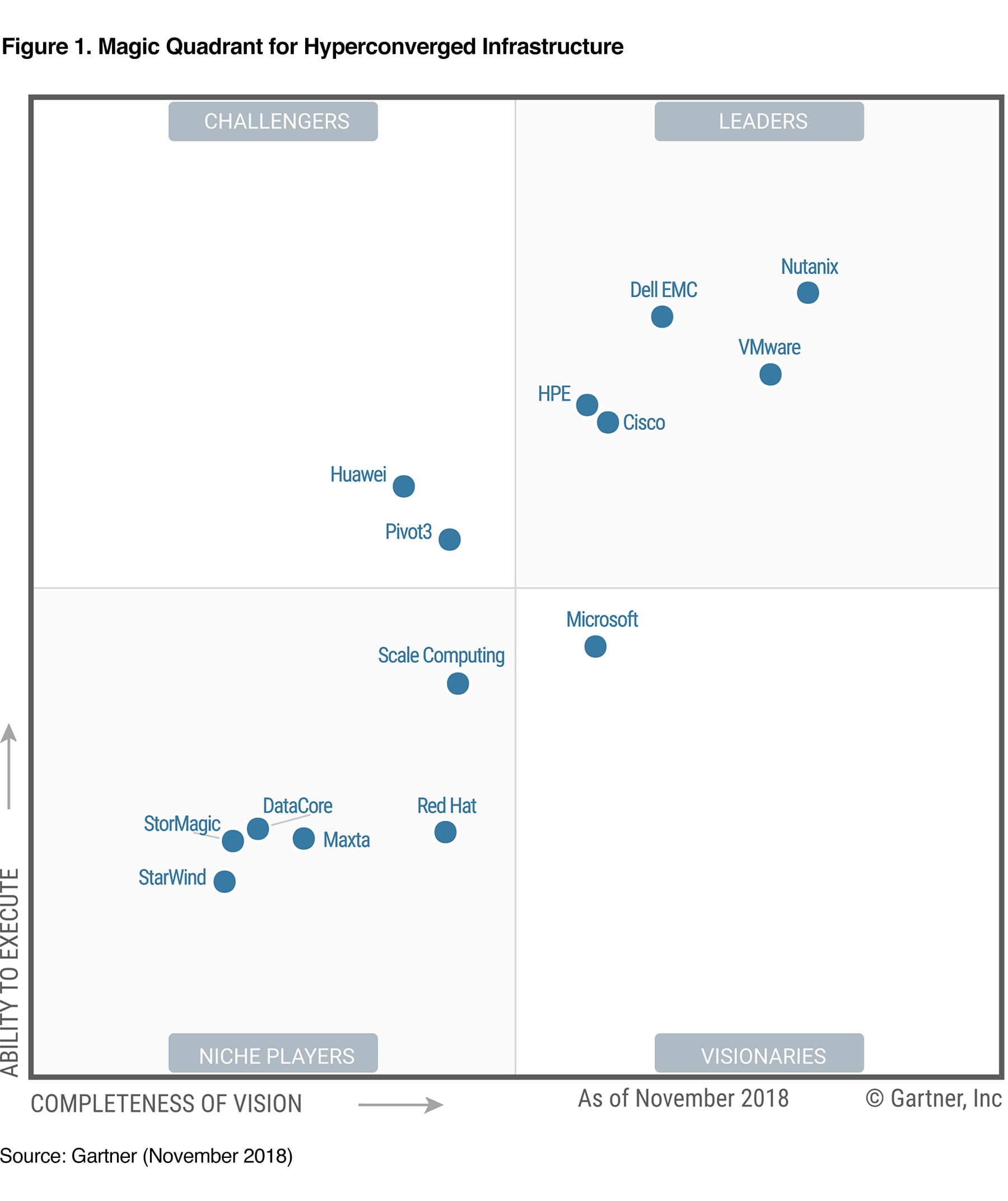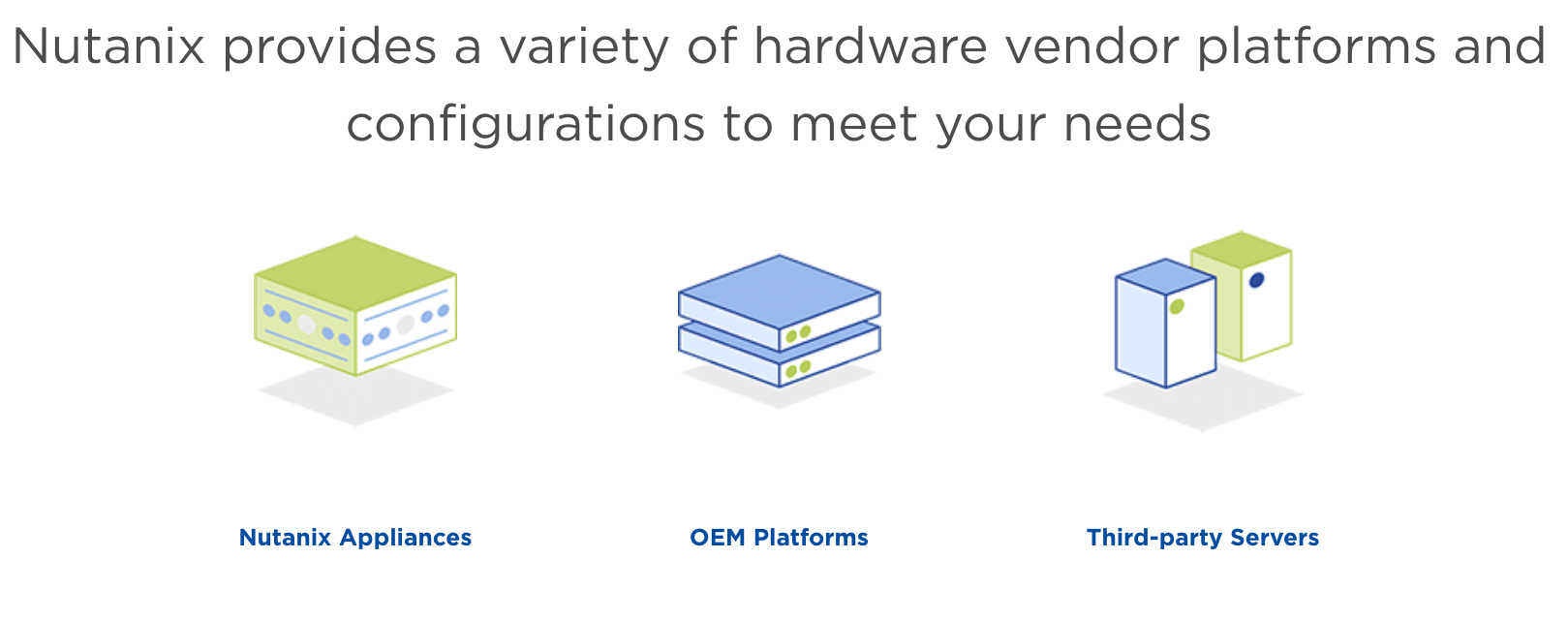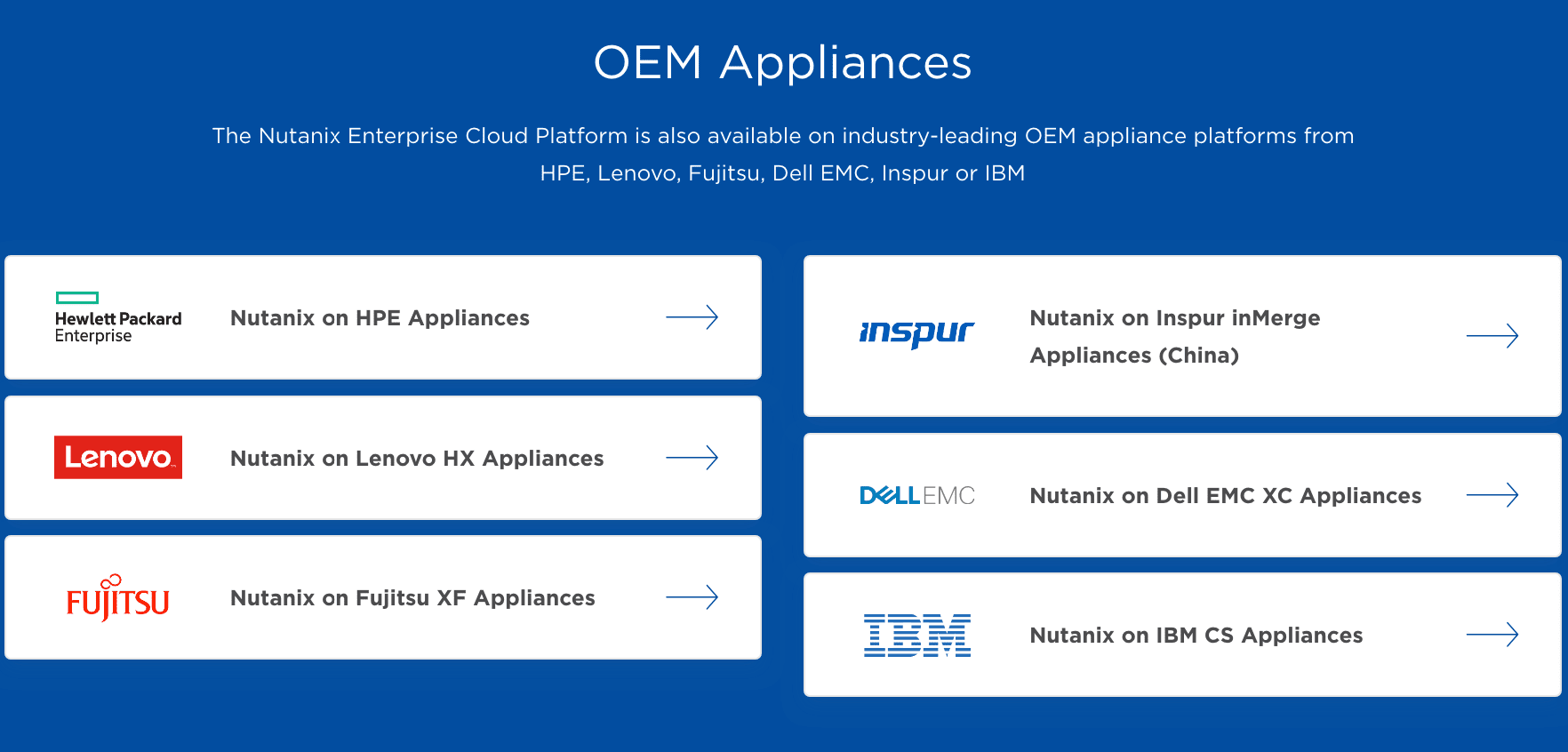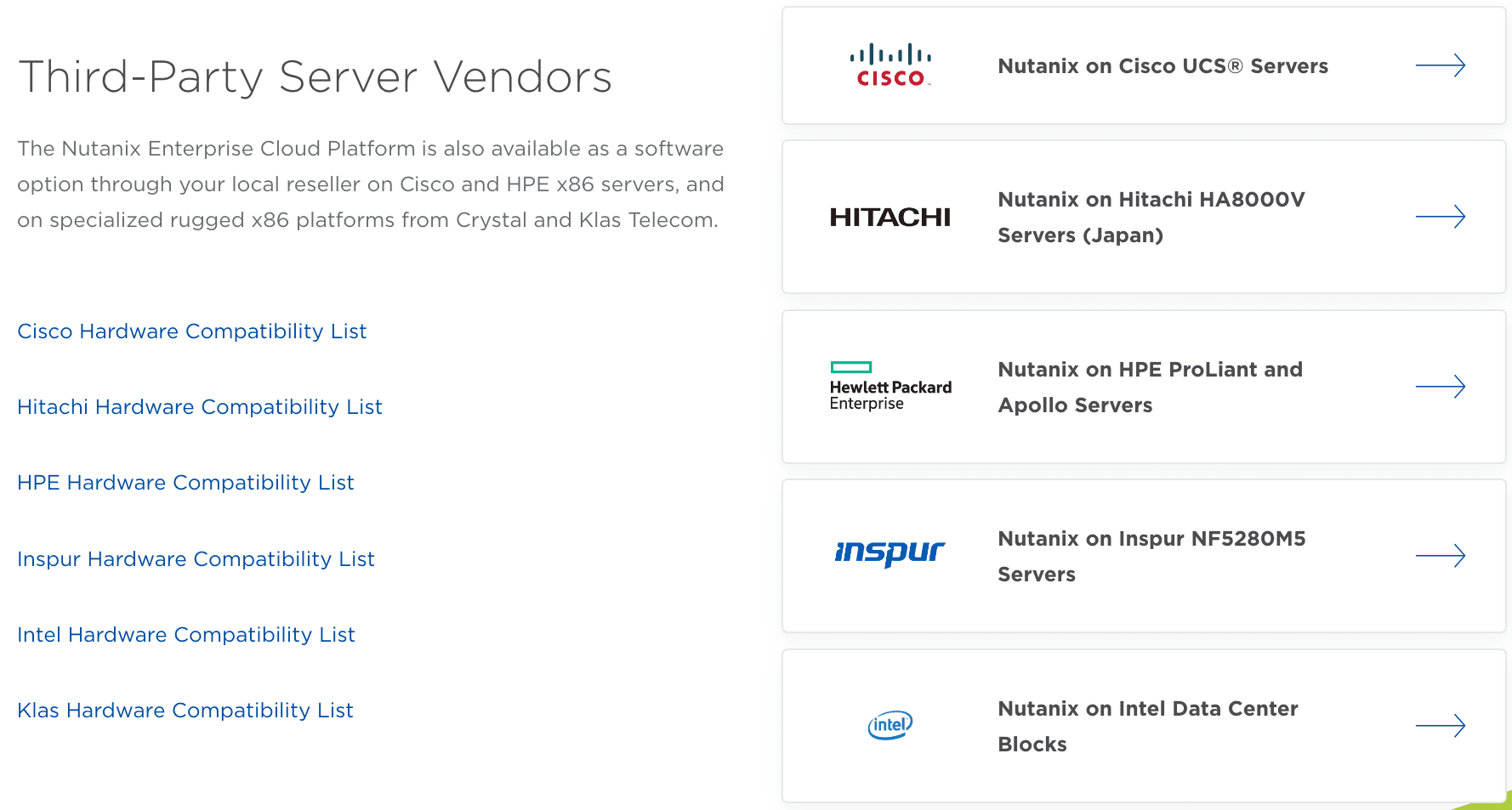Why Both Superconvergence and Hyperconvergence are Hollow Marketing Constructs
Executive Summary
- Recently, the term superconvergence has begun to appear regarding infrastructure.
- Here is our analysis of the reality of superconvergence.

Introduction
Before we get into superconvergence as a term and a topic, we must first evaluate the term hyperconvergence. The reason is that Hyperconvergence is the precursor to the term superconvergence.
The primary difference between converged infrastructure (CI) and hyper-converged infrastructure is that in HCI, both the storage area network and the underlying storage abstractions are implemented virtually in software (at or via the hypervisor) rather than physically, in hardware.(emphasis added) Because all of the software-defined elements are implemented within the context of the hypervisor, management of all resources can be federated (shared) across all instances of a hyper-converged infrastructure.
The potential impact of the hyper-converged infrastructure is that companies will no longer need to rely on different compute and storage systems, though it is still too early to prove that it can replace storage arrays in all market segments.[10] It is likely to further simplify management and increase resource-utilization rates where it does apply.
Therefore, hyperconvergence is an increase in the amount of virtualization.
Hyperconvergence is a trendy term applied to a long march of increased virtualization since it was first introduced into data centers. Naturally, the public cloud explosion we have experienced would not have been possible without virtualization.
However, vendors and consulting firms will create or co-opt any term like this. And we can see this in an article from Network World.
“The biggest plus (of hyperconvergence) is that it’s a one-stop shop,” he says. “If I have a problem with a drive or the software, it’s just one call to Nutanix. There’s no finger-pointing between vendors.” – Network World
Notice that the term is “interpreted” as a single vendor solution — in this case, Nutanix.

And notice that Nutanix is in the top position in the Gartner MQ on this topic. Not that we pay any attention to Gartner, as we view them as merely taking income from vendors to push customers to the most expensive solutions as we cover in The Problem with How Gartner Makes its Money.
This problem with financial bias comes up in the following quotation from Forbes, written by a contributor (that means the source is most likely financially connected to a vendor).
Nutanix plays in the spiralling market for so-called hyperconvergence, which IT consulting firm Gartner says grew 50% in 2014 to $6 billion. – Forbes
That is what Gartner does. They take money from vendors and then reflect their interests and perspectives in their research.
How the Philosophy of “One Ring to Rule Them All” Invariably Leads to Lock-In
Another problem exists with this interpretation of hyperconvergence as a “turn-key” solution from one vendor. The problem is that this type of thing has been promised numerous times, ranging from ERP systems to selecting a single systems integrator. And in each case, it has led to overwhelming account control by vendors of customers and the use of uncompetitive offerings by the customer who is deluded by sales pitches into thinking that one vendor offers the best of everything.
Notice these quotes from what we think was most likely a paid placement (that is, the vendor paid for Forbes to carry the article, but Forbes does not declare this) from Nutanix.
Howard Ting is senior VP of marketing for Nutanix and is technically literate enough to have previously led the firm’s product development division. He insists that we need to move our collective mindset(s) to this new decoupled notion of cloud manoeuvrings today. “Our approach is to advocate web-scale computing (i.e. starting small and scaling up to potentially huge) in the private cloud, but with a doorway to public cloud extensibility for extra performance, capacity and higher resilience when it is needed – this is what Nutanix provides. We also offer the power to move virtual machines from one hypervisor to another. – Forbes
Interestingly, neither of these proposals is unique to Nutanix. First, the private cloud is simply a euphemism for hosting.
Secondly, virtualization allows virtual machines to be moved between servers (regardless of where the server is located).
Firms use Nutanix software on commodity hardware in the first instance, but Nutanix also runs in Amazon Web Services for public cloud and so that extensibility becomes part of the ‘fabric’ of Nutanix itself. Cloud computing needs to be configurable to the precise needs of each application at the point of deployment – and yet scalable and portable bi-directionally (between private and public). It’s a big ask unless you have dedicated app runtime data plane intelligence (as we do with our Acropolis product) and management software (as we do with our Prism product) all working together,” said Ting. – Forbes
All of the virtualization software can run on-premises or in the cloud. This entire quotation is nonsense and is designed to make Nutanix sound like it has done something innovative. Nutanix’s virtualization software is a flavor of KVM or Kernel Virtual Machine. We are very firmly in the area of fake innovation. A vendor takes credit for either open source innovation that we cover in the article How Fake Innovation is Used as an Excuse by Companies for Excess Profits.
Removing Lock-In?
Nutanix states that it removes lock-in by allowing multiple hypervisors or virtualization technologies, such as AHV (Nutanix’s hypervisor-based upon KVM), ESXi, and Hyper-V. However, that understates how lock-in works and that lock-in is not connected to a single component. A company using Nutanix as a “one-stop-shop” is locked into the options and decisions made by Nutanix and locked into Nutanix.
For example, it is curious to hear vendors like Oracle talk about the importance of not being locked into AWS. No matter how much their business model is based upon lock-in, vendors think lock-in is something that only other vendors do. There is virtually no vendor who is not a monopoly vendor who does not use the term lock-in when describing competing offerings.
Nutanix offers Prism, their “single pane of glass,” onto the data center.
Furthermore, the claim about the “one-stop-shop” is also debatable. A simple analysis of Nutanix’s website demonstrates that, in many cases, the hardware is not Nutanix.

In one of the modalities, the Nutanix appliance, Nutanix possibly providing the hardware. In the two other cases, the hardware is just from a standard server vendor.

These are the OEM vendors.

These are third-party vendors. Is this one-stop-shopping? It seems as if one will have to deal with these vendors, although Nutanix may help intermediate.
A One-Stop Shop….That is Moving Away from Providing One of the Major Components?
Nutanix’s announcements state that it is moving away from its appliance business, as the following quotations explain.
Hyper-converged infrastructure pioneer Nutanix executives are making clear that they have one big goal: start thinking of the company as a software firm instead of a hardware appliance provider.
During the company’s fourth fiscal quarter 2018 earnings call, executives outlined an aggressive plan to marginalize its hardware sales while moving customers to purchase the company’s technology as termed-based software and subscriptions.
For fiscal year 2018, the transition from hardware to software was nearly complete, with pass-through hardware revenue counting for less then 10 percent of Nutanix’s total revenue in the fourth quarter of 2018, said Nutanix CFO Duston Williams. – CRN
Also, Nutanix offers its virtualization technology, or the customer may use virtualization from other vendors — so again, this is another vendor to deal with. Nutanix offers Prism, which is their own, as is their virtualization software (which may or may not be used).
If this is one-stop shopping, then the term one-stop shopping has no meaning.
This is Nutanix Prism. It is ok.
See for yourself whether you like it more than OpenShift. As we noted in the article What is the Real Story of How IBM will Use Red Hat?, OpenShift became immediately less desirable as soon as IBM announced they would acquire Red Hat.
What Nutnanix is Offering with This Hyperconvergence
It looks like Nutanix is offering a dashboard like Prism, with an optional virtualization technology — and is exaggerating what it offers. The negative is that going through Nutanix means many choices are blocked. For example, Brightwork Research & Analysis has concluded that in most cases, using OpenCompute hardware is preferable to vendors (see the article How the Open Compute Project Reduced the Power of Proprietary Vendors).
But OpenCompute is not mentioned on the Nutanix website.
Nutanix, through its use of the term “hyperconvergence,” appears to be setting up customers to make many decisions for customers that we would probably disagree with and for which there are better alternatives. Furthermore, while companies typically present their partnerships positively, we usually see it as a negative for customers. Having these hardware partners means that all of these entities will be pushing Nutanix to promote their hardware.
Creating a Term, Promoting the Term, and Associating the Company with that Term
And this is what vendors do; they create new terms, declare the terms desirable, drop some coins in Gartner’s pocket to make the term a “thing,” and then associate themselves with that item. This is precisely how the ERP hustle went.
Stoking the Hype Furnace..A Pattern Often Repeated
During the height of ERP, without any evidence, ERP vendors Gartner Forrester and Accenture and the rest of the consulting companies (i.e., the “coalition of the billing.”) declared that everyone had to have ERP systems. This created a massive inferiority complex with IT decision-makers, realizing they needed ERP and required ERP purchases and implementations on their resume. As we covered in the book The Real Story Behind ERP, none of the claims about ERP came true, and no academic studies have located the ROI from ERP systems. Many companies ended up worse off — as they had to go through the expense of rewriting their purpose-built applications into the ERP system (often using the ERP vendor’s rules and development environments, as we cover in the article Why SAP Customers Followed SAP’s Advice on Coding in ABAP.) In other cases, companies had their purpose-built functionality replaced with more poorly fitting generic functionality provided by the ERP system. They were pressured by the consulting firm and the ERP vendor to replace it because it was inferior to “best practices.”
Nutanix = Hyperconvergence?
Nutanix goes a step further, dipping into the pool or illusion by not meeting the definition that is coopting. See this from their website.
This is their definition of hyperconvergence (or HCI)
HCI converges the entire datacenter stack, including compute, storage, storage networking, and virtualization. Complex and expensive legacy infrastructure is replaced by a platform running on turnkey, industry-standard servers that enable enterprises to start small and scale one node at a time. Software running on each server node distributes all operating functions across the cluster for superior performance and resilience. – Nutanix
Is Nutanix doing this?
We don’t think so. Neutanix offers a rebadged version of Linux KVM, Prism for the dashboard, and some partnerships with vendors you can buy with or without Nutanix.
It’s almost like cloud was never really flexible until we got to the point where we could move applications around between clouds quite as easily as we can do now and will do in future, with Nutanix or its competitors. Okay so it’s not quite that much of an upheaval, but there is a sense of new efficiency here that is coming to the fore. – Forbes
Once again, this has nothing to do with Nutanix or hyperconvergence and virtualization. Containers are even more accessible to move than VMs.
When is Hyperconvergence Not Hyperconvergence?
Curiously, Nutanix is probably the vendor MOST associated with the term hyperconvergence! And they don’t even come close to meeting a definition they most certainly have had input in shaping.
Let us review Network World’s definition.
Converged infrastructure involves a preconfigured package of software and hardware in a single system for simplified management. But with a converged infrastructure, the compute, storage, and networking components are discrete and can be separated. In a hyperconverged environment, the components can’t be separated; the software-defined elements are implemented virtually, with seamless integration into the hypervisor environment. This allows organizations to easily expand capacity by deploying additional modules. – Network World
That is quite an assumption that the integration is seamless and integrated into the hypervisor environment because components can’t be separated. It allows the organization to expand capacity more efficiently.
But before we get there, the idea of inseparable components is a myth.
- The virtualization software is not inseparable from the hardware..
- ..which is not inseparable from the dashboard..
- ..which is not inseparable from…well, you get the idea.
This is very quickly, technically proven, and, in fact, quite obvious.
Secondly, even if the concept of inseparability were genuine, this would not necessarily mean that it enhanced the capacity to expand capacity. There (inseparability and scalability) are entirely different topics, and there are a lot of unexamined assumptions in this quotation.
Hyperconverged infrastructure promises to deliver simplicity and flexibility when compared with legacy solutions. The integrated storage systems, servers and networking switches are designed to be managed as a single system, across all instances of a hyperconverged infrastructure. The inherent management capabilities enable ease of use, and software-defined storage is expected to yield greater scalability and resource efficiency. Companies can start small and grow resources as needed. HCI vendors also tout potential cost savings in areas including data center power and space; IT labor; and avoidance of licensed software such as backup or disaster recovery tools. – Network World
The Problem When the Term Legacy is Unsheathed from Its Scabbard
Here is the world’s “legacy” again. Legacy is a term used to denigrate any previously existing product or approach without providing evidence of the superiority of the new approach. For example, SAP’s definition of legacy, as we cover in the article How SAP Used and Abused the Term Legacy is any application or database that is not SAP. And to a furniture salesman, any furniture in your house is also a legacy.
This overall quotation takes the assertion of a hypothesis, the hypothesis of hyperconvergence, and assumes it is accurate or gives it the benefit of the doubt.
Naturally, Nutanix and other vendors associated with hyperconvergence would like everyone to accept the hypothesis as accurate. It gets tiresome for readers for us to beat a dead horse. Still, this analysis is incomplete without pointing out that a Chinese-based construction conglomerate owns IDG (see How IDG Works to Provide Inaccurate IT Information). IDG reflects the interests of its advertisers.
This article appears to be written after a discussion with an advertising vendor. Advertisers do not want their contentions fact-checked.
And Now Superconvergence
That took longer than expected, but superconvergence is based upon hyperconvergence. So, without understanding the background of hyperconvergence from multiple dimensions, it makes little sense to try to address superconvergence.
Is Superconvergence a Term Yet?
The first thing that came across in our research was how poorly established the term superconvergence is. This article’s publication isn’t easy to find many articles or other media coverage of the term.
However, yet again (as with hyperconvergence), the term is co-opted by a vendor. One vendor that has done this is Cloudistics.
Reston, Virginia-headquartered Cloudistics is in some ways a successor or complement to Nutanix, the company that reinvented the datacenter space with so-called ‘hyperconverged’ infrastructure by tightly integrating compute, storage and networking functions on appliance servers. While Nutanix continues very successfully to reinvent itself as a multi-cloud software company, Cloudistics is among the more interesting of a new generation of companies attempting to force their way into the datacenter private cloud. – IDGConnect
Notice this quotation from the Cloudistics blog.
Many of our customers had legacy virtualization, they considered legacy converged and hyper-converged solutions, as well as the public cloud. Cloudistics is better. We include compute, storage, networking and virtualization in our premium private cloud solution, allowing customers to digitally transform and just VEXIT—escaping the legacy hypervisor tax without complexity, compromise, or confusing costs. – Cloudistics
Do you notice anything?
We did.
Superconvergance is undifferentiated from hyperconvergence.
This has led us to the following conclusion.
Conclusion
- The term hyperconvergence is a fad term that is being promoted by vendors based upon false claims that seek to commingle the imaginary construct of an inseparable combination of data center components with scalability.
- None of the hyperconvergence claims are accurate and are being driven and molded by vendors like Nutanix through Gartner and IT media entities highly dependent upon vendor funding.
- Media entities that have covered the topic of hyperconvergence assume that the claims made to them about the term by vendors and consultants are valid.
Superconvergence appears to be the next vendor marketing construct that has received little effort into making “a thing” and is entirely undifferentiated from the term hyperconvergence.
References
https://www.networkworld.com/article/3207567/what-is-hyperconvergence.html
http://wikibon.org/wiki/v/Converged_Infrastructure_Moves_from_Infant_to_Adolescent
https://en.wikipedia.org/wiki/Nutanix
*https://www.cloudistics.com/escaping-legacy-private-cloud/
*https://www.cloudistics.com/vexit-escape-hypervisor-tax/
https://www.datacenterknowledge.com/archives/2015/12/10/why-hyperconverged-infrastructure-is-so-hot/
http://www.iraj.in/journal/journal_file/journal_pdf/3-400-151141452945-49.pdf
https://www.nutanix.com/hyperconverged-infrastructure
https://www.idgconnect.com/idgconnect/analysis-review/1500152/cloudistics-aims-trump-nutanix-superconvergence-play
https://www.linux-kvm.org/page/Main_Page
https://www.quora.com/unanswered/How-does-Nutanix-work
https://www.crn.com/news/cloud/nutanix-pushes-software-as-it-pulls-away-from-hardware-biz
https://www.forbes.com/sites/adrianbridgwater/2015/06/10/nutanix-why-cloud-was-never-really-flexible-until-hyperconvergence/#31d1a089ded0